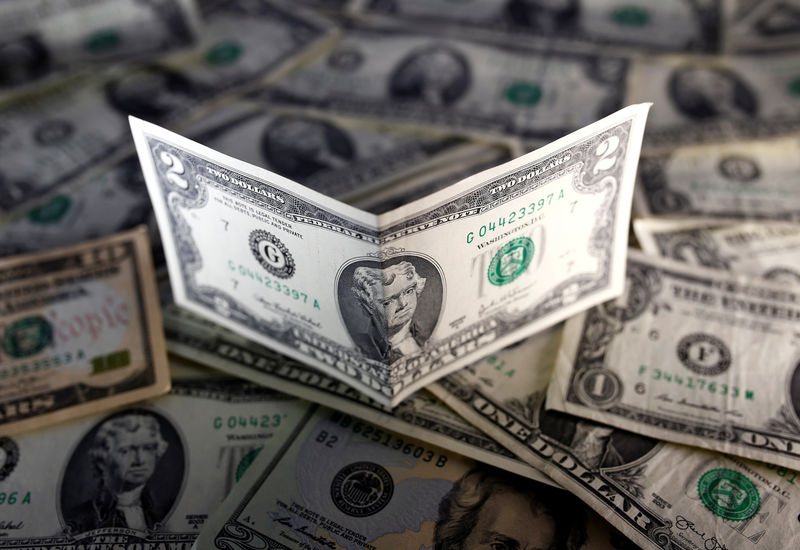By Gina Lee
Investing.com – The dollar was down on Friday morning in Asia, but held firm at a 20-year high and is set for its best monthly gain in a decade. Bets on rising U.S. interest rates, alongside doubts about growth in Europe and China, gave the safe-haven U.S. currency a boost.
The U.S. Dollar Index that tracks the greenback against a basket of other currencies edged down 0.17% to 103.485 by 11:49 PM ET (3:49 AM GMT).
The USD/JPY pair edged down 0.18% to 130.62, with Japanese markets closed for a holiday.
The AUD/USD pair gained 0.60% to 0.7134, with the Australian producer price index growing 4.9% year-on-year and 1.6% quarter-on-quarter in the first quarter of 2022. The NZD/USD pair was up 0.26% to 0.6506.
The USD/CNY pair was up 0.30% to 6.6459 and the GBP/USD pair was up 0.26% to 1.2489.
The yen fell as low as 131.25 overnight after the Bank of Japan pledged to buy endless amounts of bonds daily as needed. The Japanese currency fell through 130-per-dollar for the first time since 2002 on Thursday, and is also down almost 7% in April 2022, its worst month since Nov. 2016.
"Even though the BOJ had shown no sign of baulking on its commitment to its yield curve control policy, the market clearly still harbored suspicions that it might," Rabobank strategist Jane Foley told Reuters.
The Japanese approach contrasts with that taken by the U.S. Federal Reserve, with markets priced for 150 basis points (bps) of hikes in just three meetings and generating a fresh rush of funds into the greenback.
In China, COVID-19 lockdowns are slowing down an already cool Chinese economy. The yuan fell to 18-month lows at 6.6400 per dollar and is on course for a record monthly drop of 4.3%.
The dollar index hit a two-decade high of 103.93 as the yen fell and was up more than 5.3% through April 2022. If sustained, it would be the index’s best monthly gain since May 2012 and even data showing that the U.S. GDP contracted 1.4% quarter-on-quarter in the first quarter of 2022 proved to be a small obstacle.
Across the Atlantic, the euro fell through $1.05 for the first time in five years on Thursday, and last traded at $1.0511.
"Like the yen, the euro is becoming more deeply undervalued against the U.S. dollar," MUFG Bank currency analyst Lee Hardman told Reuters.
"Market participants increasingly price in a widening divergence opening up between the performance of the euro-zone and U.S. economies and subsequently the outlook for European Central Bank and Fed policies."
The euro has fallen 5% in April, and just over 7% since Russia's invasion of Ukraine on Feb. 24, against the dollar. Concerns about Europe's energy security, inflation, and economic growth continue thanks to the ongoing war in Ukraine, as well as Russia’s halting of gas supplies to Poland and Bulgaria earlier in the week. These concerns also saw the pound hit a 22-month low overnight.
